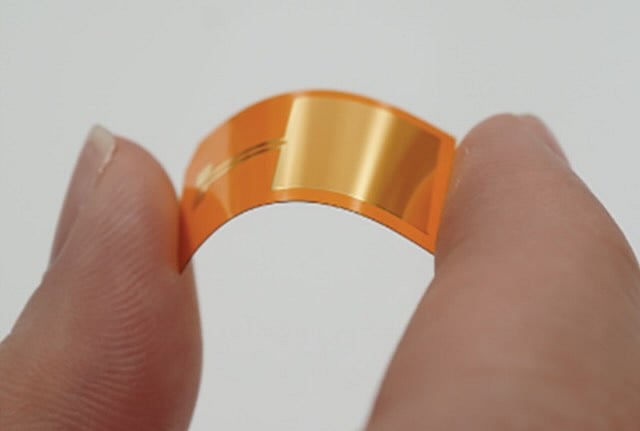Get Healthy!

- Dennis Thompson
- Posted October 28, 2024
Skin Patch Uses 'Imperceptible' Electric Zaps to Heal Wounds Without Drugs
An experimental electric bandage might help doctors stop bacterial infections without using any drugs, a new study suggests.
Imperceptible low-level electric current applied through a skin patch caused a nearly 10 times reduction in amounts of Staphylococcus epidermidis, a common bacterium found on human skin, researchers reported Oct. 24 in the journal Device.
“This opens up exciting possibilities for drug-free treatments, especially for skin infections and wound healing, where antibiotic-resistant bacteria pose a serious challenge,” said co-senior researcher Bozhi Tian, a professor of chemistry with the University of Chicago.
Electricity already is being used to manage a number of human illnesses, researchers noted. Pacemakers use electricity to maintain a steady heartbeat, and eye implants can partially restore a person’s vision by using electricity to stimulate the retina.
For this study, researchers explained in a journal news release that they decided to see if they could control bacteria using electricity instead of antibiotics -- an important idea, given that antibiotic-resistant bacteria are considered a top threat to human health.
Drug-resistant infections might have contributed to nearly 1.3 million deaths worldwide in 2019, researchers said in background notes. Overuse of antibiotics in humans and livestock have caused harmful bacteria to evolve and develop resistance to current drugs, making them less effective.
In the latest study, researchers focused on S. epidermidis because it can cause a serious infection if it gets into the human body through a cut or a medical procedure. Three strains of S. epidermis resistant to all classes of antibiotics have emerged.
“Because Staphylococcus is part of the microbial ecosystem that naturally exists on our skin, we prefer not to eradicate it, since their complete absence on our skin could cause other problems,” explained co-senior study author Gürol Süel, a professor of molecular biology with the University of California, San Diego.
Researchers found that small electric currents can fight S. epidermidis, but only in an acidic environment. Healthy human skin is mildly acidic, but chronic wounds tend to be neutral to basic.
“Bacteria’s response to electricity isn’t well explored, partially because we don’t know the specific conditions under which bacteria will be excited,” said lead researcher Saehyun Kim, a graduate student with the University of Chicago. “Discovering this selective excitability will help us discover how to control other bacteria species by looking at different conditions.”
Under ideal acidic conditions, a weak electric current of 1.5 volts -- significantly lower than the 15-volt limit deemed imperceptible to humans -- stopped 99% of bacteria, researchers found.
However, in a neutral pH, the electricity showed no effects against bacteria.
Based on this information, researchers designed a skin patch they call the Bioelectronic Localized Antimicrobial Stimulation Therapy, or BLAST.
The patch contains electrodes to deliver the current and a water-based gel that creates an acidic environment.
After an 18-hour treatment cycle, the BLAST patch caused S. epidermidis levels to decline by nearly 10 times on pork skin, compared to an untreated sample. The same thing happened when the patch was placed on a bacteria-contaminated catheter.
More research is needed to test the safety and effectiveness of the patch, but researchers believe it could lead to an electric bandage that could control infections without drugs.
More information
The U.S. Centers for Disease Control and Prevention has more on antimicrobial resistance.
SOURCE: Cell Press, news release, Oct. 24, 2024







